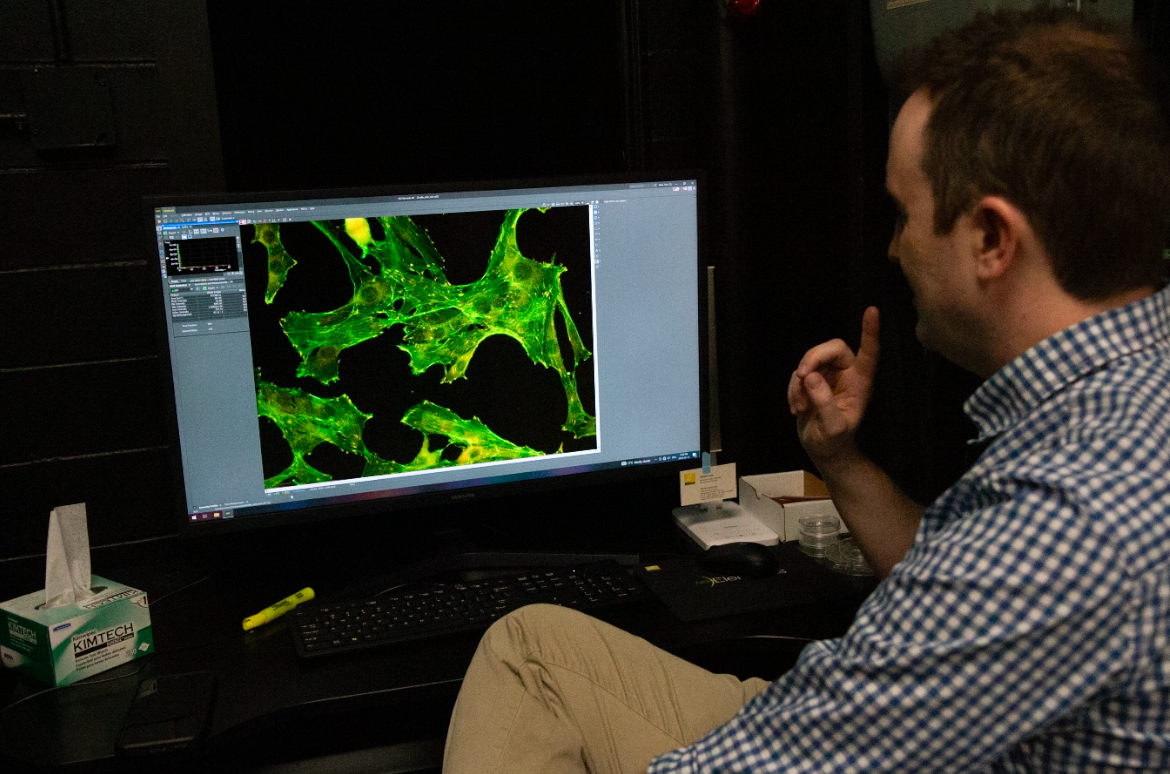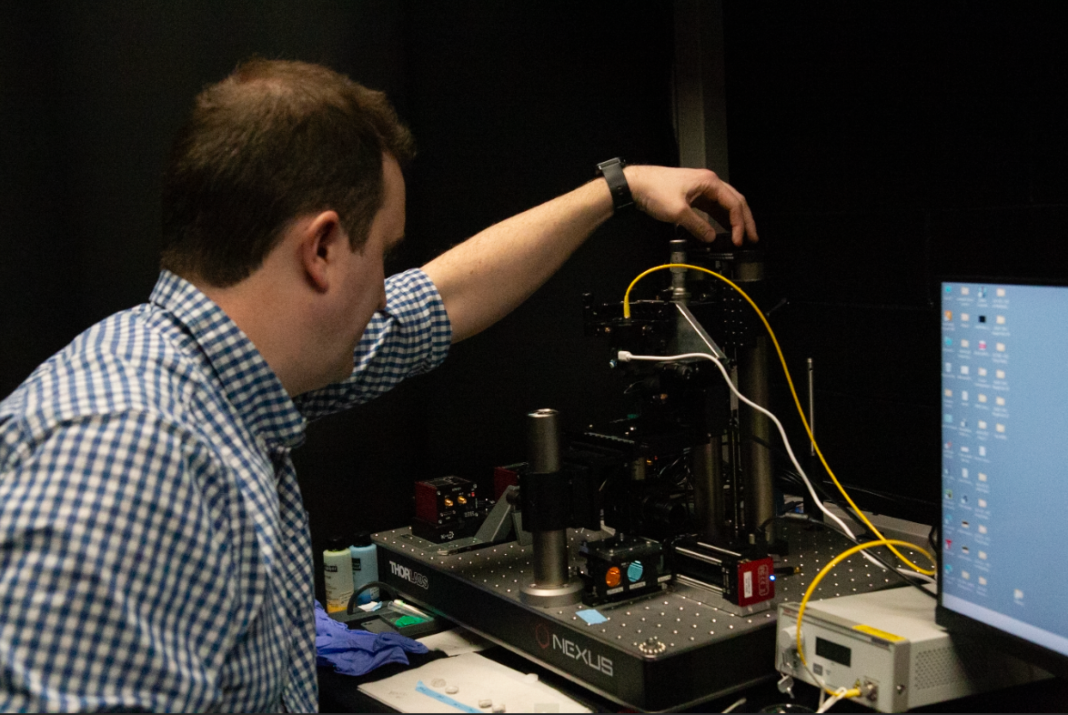An Ottawa-based researcher is delving into Canada’s most-discarded blood product — and his efforts to make it from scratch could revolutionize our health-care system.
Carleton University researcher Andrew Harris is seeking a viable supply of lab-produced platelets, the small cells that work to prevent bleeding.
Harris says synthetic platelets could be less susceptible to donor rejection and could relieve patients’ stress about faltering donation numbers.
If he is successful, Canadian Blood Services believes his work may have far-reaching implications for patients who require frequent platelet transfusions and rely almost entirely on the kindness of strangers.
“Platelets are really important for clotting,” Harris explained from his quiet office. “If you’ve had surgery or an injury, platelets will form in that area and plug the wound to stop further bleeding.”
But unlike some other blood products, donor-sourced platelets are extremely difficult to preserve.
“You might think that we can just stock up on [platelets] in a freezer and then take them out if somebody needs it,” he said. “That does not work.”
Platelets have a shelf life of about a week, Harris said, and are no longer effective if they’ve been frozen. To remain usable, they must be stored at room temperature.
“If you think about even storing food at room temperature, there’s a risk of it getting contaminated with bacteria or going bad,” he said. “That makes transfusing platelets challenging in general.”
Harris said low donor engagement exacerbates those practical challenges.
“Not many [eligible] people actually donate blood to begin with,” he said. “It’s a supply-and-demand issue.”

For many Ottawa-area donors, Harris’s “supply-and-demand” concerns hit close to home.
After losing her father at a young age, Myriam Djilane now donates blood every year on her birthday. Djilane said she was not able to see her father in the week before he died, but her mother was.
“The only reason she was able to go and be able to say those final goodbyes was blood donations,” she said.
Djilane said many eligible Canadians don’t realize how “smooth and easy” it is to donate blood.
“I often have a hard time trying to get people to come with me,” she said. “People just think of all these inconveniences.”
Djilane’s paternal family are first-generation Somali immigrants, and she said she recognizes “cultural barriers” to donation.
“There’s a little bit of taboo around it,” she said. “[But] I understood the actual impact that blood donation has on people’s lives for a price I thought was quite small for myself.”
Tim McKee, 55, said he has no problem donating blood — but he is logistically unable to give platelets.
“I’m walking around with this golden fluid in my body that people need,” the frequent donor said. “I was not eligible to donate a living organ, so [giving blood] was the next best thing that I could do.
“But the plasma and platelets program is really intensive.”
Platelets are collected through plateletpheresis, the Canadian Blood Services website explains.
Unlike regular blood donation, this process requires the donor’s blood to pass through a centrifuge, which draws out platelets. For a large-volume donation, plateletpheresis can take up to 100 minutes.
McKee, who lives outside Eganville, Ont., added there are no clinics to donate platelets near his home.
“I’m happy to be a giving person, but it’s an hour and a half each way,” McKee said. “It just doesn’t work for me.”
The state of Canada’s blood inventory can be “frightening,” said Glenna Gosewich, 55.
Half of all Canadians will require blood at some point in their lives or know someone who will, according to Canadian Blood Services — but only about four per cent donate.
“I just want to make sure the supply is there for people who need it,” said Gosewich, who has donated blood products 145 times.
“I’m losing faith in the generosity of people as time goes on,” Gosewich said. “I see how empty the clinics can be. I hear the appeals for donors.
“I know how hard it can get.”
Harris, an assistant professor of mechanical and aerospace engineering at Carleton, said his path to platelet research offers a “fresh perspective.”
A background in understanding forces, he said, is actually very applicable to cell research.
“If you think about the beating of the heart, a lot of forces are generated in order to pump blood through the bloodstream,” Harris said. “In the lungs, as you breathe, the tissue expands and contracts.”

“We’re not trying to reproduce just the biological properties of bone marrow, like the proteins and chemical substances,” Harris said. “We’re also trying to reproduce the physical properties of bone marrow.
“Cells might produce platelets more effectively in a soft environment versus a stiff environment.”
The research is still in its “early stages,” he added.
“We’re really still exploring,” he said. “We’re not at the stage of having developed the perfect environment, but we’re working on things like compressing cells to see if it encourages platelet production.”
William Sheffield, an associate director of research at Canadian Blood Services, spoke highly of Harris’s approach.
“Synthetic platelets would greatly assist Canadian Blood Services in our mission to provide blood products to Canadian patients in need,” Sheffield said in an email. “However, platelets are amazingly complex mini-cells, and it has proven very difficult to replace them, so far.
“Dr. Harris’ novel work focusing on the atomic forces required to make platelets is highly innovative and could provide a better path to the clinic than has previously been available.”
Harris said it’s difficult to predict if and when research like his could be deployed in a clinical setting.
“I would say something like five to 10 years,” Harris said. “Thinking about mechanics is still a newer perspective.”
“Science works slowly,” Djilane noted. “Do I think there will ever not be a need for blood donors? Probably not.”
“But to me, innovation is innovation,” she added. “The final goal is always to be improving health care for patients, so if there is less of a need for blood donors, that’s absolutely phenomenal.”
Gosewich said Canadians have already been accustomed to many lab-developed hormones and organs.
“There’s already synthetic heart valves and synthetic insulin,” Gosewich said. “If it can help people, and it’s safe, I think this is what scientific development should be all about.”
Harris said if his work proves successful, it could be significant for other types of donor products.
“I think that there are broader implications,” he said. “The thing about this kind of work is that if we were to hit on something that really helps us out, things could go a lot faster.
“It’s hard to say,” Harris said with a smile. “But I’m hopeful.”
Featured image by Elissa Mendes/the Charlatan.






